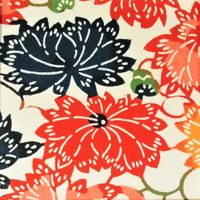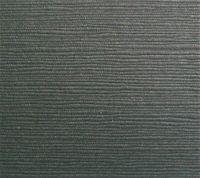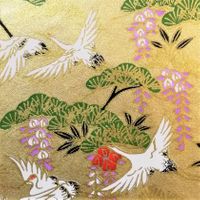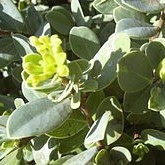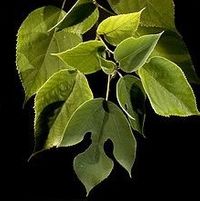Japanese Paper [1]
Washi (和紙) is traditional Japanese paper. The word "washi" comes from wa meaning 'Japanese' and shi meaning 'paper'. The term is used to describe paper for which local fibre is used and which is processed by hand and made in the traditional manner. Washi is made using fibres from the inner bark of the gampi tree, the mitsumata shrub, or the paper mulberry (kōzo) bush. As a Japanese craft it registered as a UNESCO intangible cultural heritage. Washi is produced in a way similar to that of ordinary paper, but relies heavily on manual methods. It involves a long and intricate process that is often undertaken in the cold weather of winter, as pure, cold running water is essential to the production of washi. Cold inhibits bacteria, preventing the decomposition of the fibres. Cold also makes the fibres contract, producing a crisp feel to the paper. It is traditionally the winter work of farmers, a task that supplemented a farmer's income. For a detailed description of the process see links mentioned below. Chiyogami/ Yuzen refers to Japanese hand-screened decorative kozo washi consisting of repetitive patterns. Originally the design was applied to handmade kozo paper with wood blocks, but today most chiyogami is produced with silkscreen techniques. Katazome is a Japanese method of dyeing fabrics using a resist paste applied through a stencil. With this kind of resist dyeing, a rice flour mixture is applied using a brush or a tool such as a palette knife. Pigment is added by hand-painting, immersion or both. Where the paste mixture covers and permeates the cloth, dye applied later will not penetrate. [1] Source : Wikipedia.org |
Gampi or Ganpi are a group of Japanese shrubs, members of the genus Wikstroemia, some of which have been used for making paper since the 8th century. Ganpishi has a smooth, shiny surface and is used for books and crafts. | Mitsumata : Edgeworthia chrysantha (common names: Oriental Paper-bush) is a plant in the Thymelaeaceae family. Mitsumatagami has an ivory-coloured, fine sur-face and is used for shodō as well as printing. It was used to print paper money in Meiji period. | Kozo: The paper mulberry (Broussonetia papyrifera, syn. Morus papyrifera L.) is a species of flowering plant in the family Moraceae. Kōzogami has a toughness closer to cloth than to ordinary paper and does not weaken significantly when treated to be water-resistant. | Tororo Aoi: The aibika (Abelmoschus manihot) is a flowering plant in the mallow family Malvaceae. This plant is used to make neri, a starchy substance used in making washi. |
